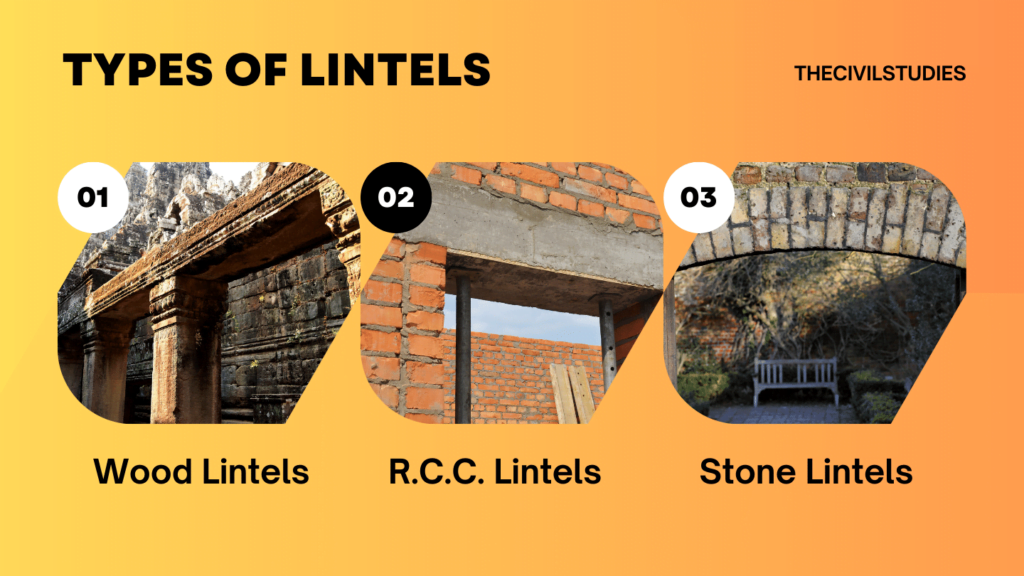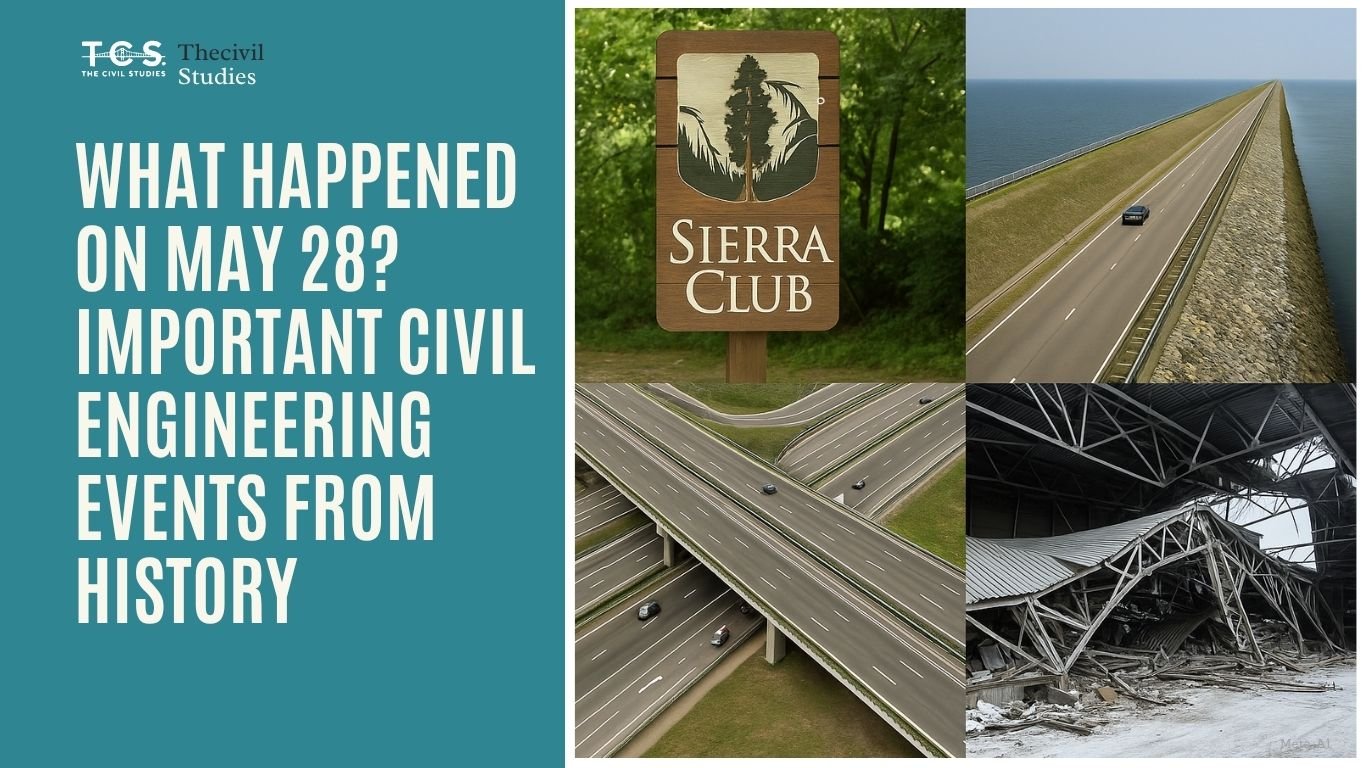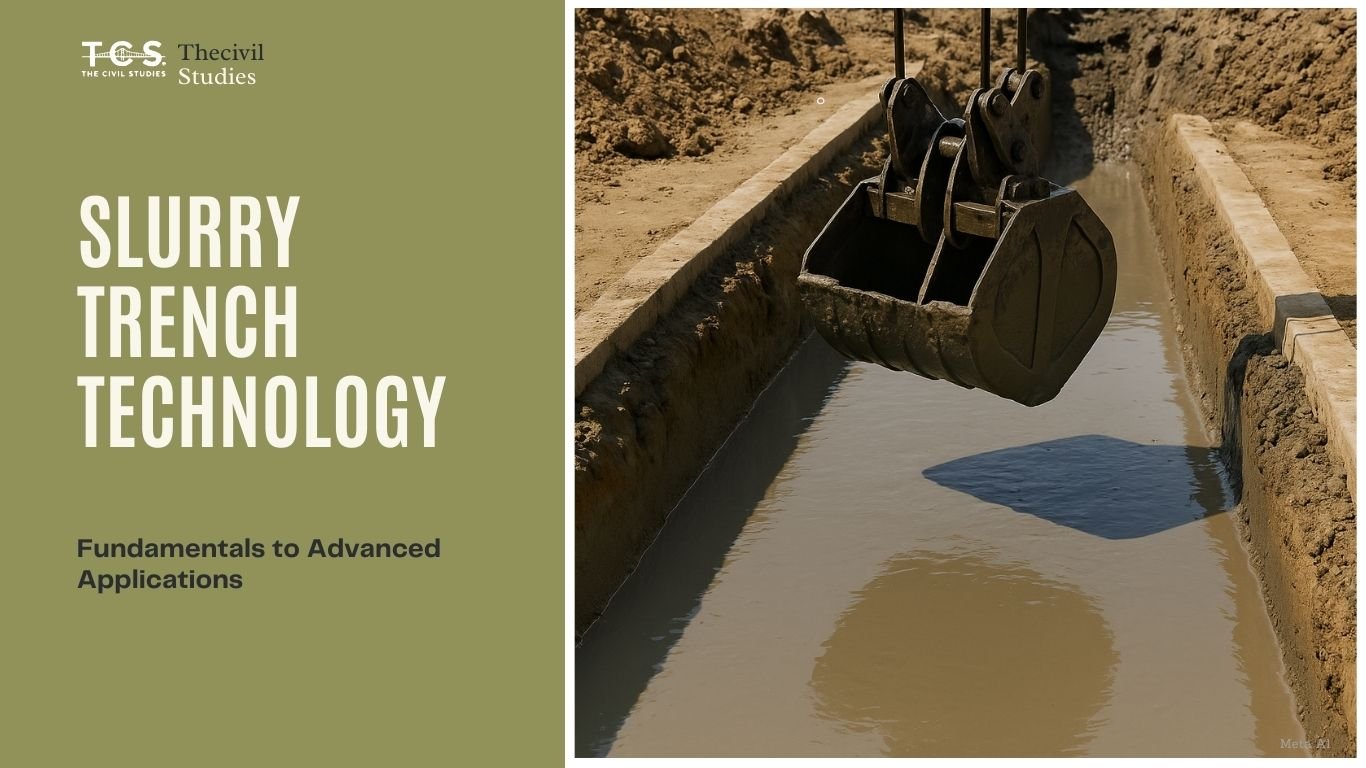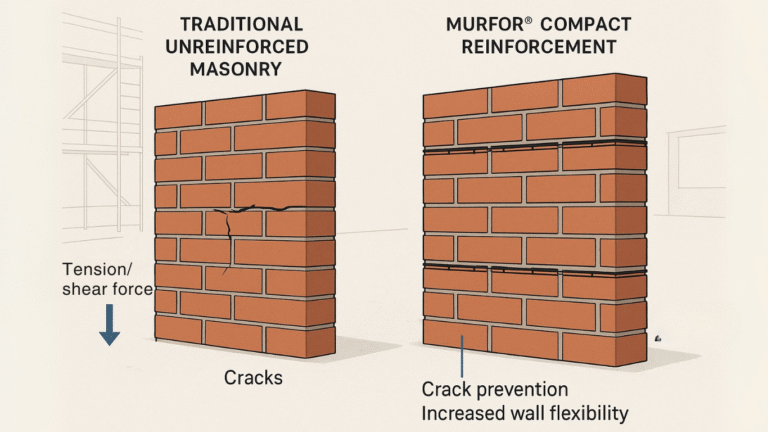In the field of building construction, lintels play an important role as horizontal flexible members that span openings in walls for doors, windows, ventilators, cupboards and other architectural elements. Their primary function is to transfer the load of the masonry above the opening to the wall through flexural action, ensuring that the frames of doors and windows are not excessively loaded. Here’s a detailed look at the types of lintels commonly used in construction. The end bearings for the lintel should be at least 200 mm. The width of lintels is same as that of wall.
Why Lintels Are Important for the Building construction,
Load Bearing: Lintels act as horizontal beams across openings in masonry walls. They transfer vertical loads from the structure above (walls, floors, ceilings) to the supporting walls on either side of the opening. This prevents overloading and possible failure of the masonry above the opening.
• Shear force resistance: Lintels resist horizontal shear forces that may develop in walls due to wind load or seismic activity. By distributing these forces effectively, they help maintain the overall structural integrity of the wall.
• Material selection: Site engineers consider factors such as span length, weight distribution and fire resistance when selecting lintel materials. Common choices include precast concrete lintels, steel lintels, or cast-in-place reinforced concrete lintels.
• Lintel bearing and embedment: Proper bearing and embedment of the lintel into the surrounding wall is important for effective load transfer. Engineering specifications will define these parameters based on the specific lintel type, wall material and loading conditions
You Can Also Read
Lintels and Sill Beams: Essential Building Members
Plinth Beams in Construction: The Definitive Guide to Ensure Structural Integrity and More
What is Formwork, Definitions, Types and Its Significance
Let’s Understands the Types of Lintels
1. Wood Lintels:
- Wooden lintels can be a single piece or assembled from multiple pieces.
- Strengthening with steel plates at the top and bottom creates flitched beams, enhancing their load-bearing capacity.
2. Stone Lintels:
- Stone lintels, made from available stones, are suitable for small spans due to stone’s weakness in tension.
- Their depth is typically kept around 1/10th of the span, and they are cut and dressed to match the wall’s width.

3. Brick Lintels:
- Constructed using well-burnt, high-quality bricks laid on ends or edges to form lintels.
- Temporary formwork is required during construction, and curing for 7–14 days is essential before removing the formwork.
4. R.C.C. Lintels (Reinforced Concrete Lintels):
- R.C.C. lintels can span any required distance and are commonly used in modern buildings.
- They can be isolated or continuous over openings and are reinforced, with main reinforcements typically placed on the lower side within the opening. Refer Is code 456-2000 For The design
5. Steel Lintels:
- Steel angles or rolled steel I-sections are used as lintels, often with tube separators to maintain spacing.
- Regular painting is necessary for sections exposed to atmospheric conditions, and they may be encased in concrete to reduce maintenance requirements.
30 May Historic Engineering Events and the Lessons They Teach
Every day brings an opportunity to learn from engineering’s greatest successes and hardest lessons. May 30 stands out in civil…
May 29 in Civil Engineering History – Timeless Milestones That Shaped Our World
Every Day Makes History — And Civil Engineers Build It From ancient wonders to modern marvels – civil engineering has shaped…
Why India’s Construction Equipment Industry Is Booming in 2025
India’s construction equipment industry isn’t just growing – it’s evolving at a pace and scale that sets it apart on…
What Happened on May 28? Important Civil Engineering Events from History
1892 – Founding of the Sierra Club Location: San Francisco, United States The Sierra Club was established by conservationist John Muir. Though…
Why the Golden Gate Bridge Is One of the Greatest Engineering Marvels in History
On May 27, 1937, the world witnessed the opening of one of the most iconic and admired engineering marvels ever…
What Is Slurry Trench Technology? Uses, Materials, and Engineering Significance
When it comes to building underground structures—like deep basements, tunnels, or barriers to control groundwater—engineers often face the challenge of…












[…] The Importance and Types of Lintels in Building Construction […]